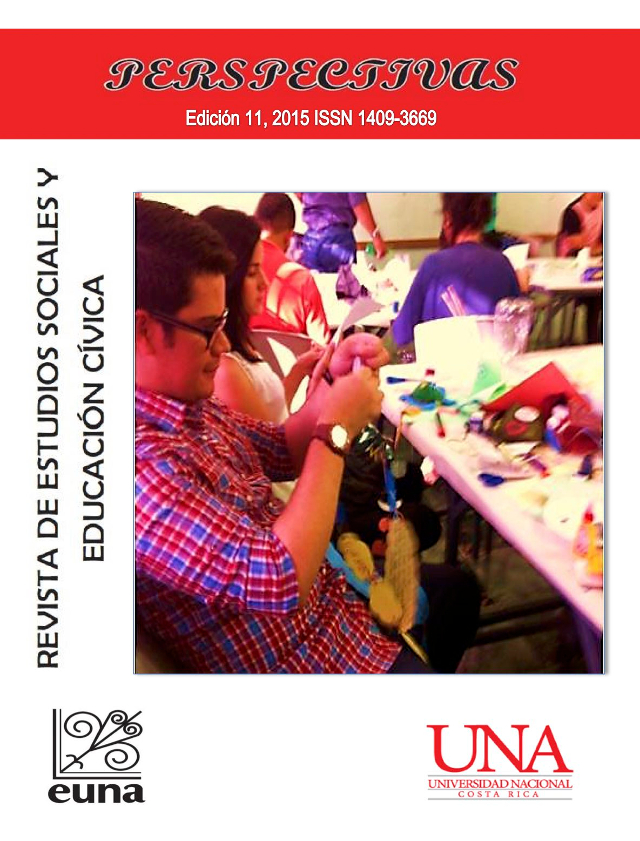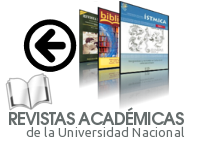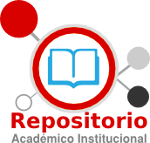An experience with students enrolled in the Supervised Teaching Practice Class from the Bachelor’s Degree in Social Studies and Civic Education of Universidad Nacional: Learning geography contents in the Social Studies class based on the use of plastic bottles to prepare didactive materials.
DOI:
https://doi.org/10.15359/rp.11.3Keywords:
Graphic organizers, concept maps, geography teaching, teaching materials, pedagogical mediationAbstract
The present work is a product of an experience with students who realized his educational practice in the Education of the Social Studies and Civic Education; for this educational workshop he proposed: to develop the creative and innovative thought of the participants as future teachers and to promote in them environmental conscience by means of the construction of didactic resources with recyclable materials, for example plastic bottles. This activity, it developed in a space of classroom that equalizes the context of the students of secondary, with the intention of bringing the pedagogic mediation over to this reality. The work was sustained theoretically in the contributions that indicate that the relation between the education and the learning of different subject matters as in Geography, is more innovative and creative when there develop significant experiences of learning in which the student body is the principal protagonist.
References
Albornoz, K. y Gouveia, E. (2007). Los mapas conceptuales como técnica cognitiva para el aprendizaje significativo de la geografía física. Revista Omnia, 13(1), pp. 79 – 104. Recuperado de URL: http://www.produccioncientifica.luz.edu.ve/index.php/omnia/article/view/7199/7187
Ausubel, D.; Novak, J. y Hanesian, H. (1989). Psicología educativa. Un punto de vista cognoscitivo. Tercera reimpresión de la segunda edición de 1983. México, D.F: Editorial Trillas.
Camacho, M. (2005). Material didáctico para la educación especial. San José, C.R.: EUNED
Campos, A. (2005). Mapas conceptuales, mapas mentales y otras formas de representación del conocimiento. Bogotá: Cooperativa Editorial Magisterio. Recuperado de https://goo.gl/ZpNkmy
Centro virtual Cervantes. (2015). Materiales curriculares. Recuperado de URL: http://cvc.cervantes.es/ensenanza/biblioteca_ele/diccio_ele/diccionario/materialescurriculares.htm
Construya Fácil (2013, setiembre 10). Botellas de plástico 10 Ideas para hacer manualidades. [Archivo de video]. Recuperado de URL: https://www.youtube.com/watch?v=mXHr3ZvCeZ0
Curriculum en línea. (s.f.). Organizadores gráficos: Historia, Geografía y Ciencias Sociales. Recuperado de URL: http://www.curriculumenlineamineduc.cl/605/w3-multipropertyvalues-49402-57765.html
Díaz-Barriga, F. y Hernández, G. (2002). Estrategias docentes para un aprendizaje significativo. México D.F.: Mc Graw-Hill Interamericana.
Dols, J. (agosto, 2005) Reciclaje y materiales para la educación física en la escuela rural. Revista Efedeportes. 10 (87). Recuperado de URL: http://www.efdeportes.com/efd87/rural.htm
Eduteka. (2007). Reseña de Organizadores Gráficos. Recuperado de URL: http://www.eduteka.org/modulos/4/86
En Casa Contigo. (2012, agosto 12). Caja mágica de botellas de plástico de Coca Cola de dos litros. Recuperado de URL: https://www.youtube.com/watch?v=vg0cNJvprpQ
Ideando a mano. (2015, marzo 26). Cómo hacer un móvil colgante reciclando una botella de plástico. [Archivo de video]. Recuperado de URL: https://www.youtube.com/watch?v=PgsGmD-4JK8
Marcano, N. (7 de agosto de 2013). 1000 formas de reciclar botellas de plástico. [Mensaje en un blog]. Recuperado de URL: http://maestraneila.blogspot.com/2013/08/1000-formas-de-reciclar-botellas-de.html
Muñoz, A. (s.f). Elaboración de ayudas didácticas con material reciclable para el desarrollo armónico de las clases de Ciencias Sociales en el grado 9º. Recuperado de URL: http://es.calameo.com/read/00082420862a99a720b72
Pariona, M. (2014, enero 21). 1000 ideas creativas para reciclar botellas de plástico. [Archivo de video]. Recuperado de URL: https://www.youtube.com/watch?v=39PmaD0lN_4
Rodríguez de Moreno, E. (2010). Geografía Conceptual. Enseñanza y aprendizaje de la geografía en la Educación Básica SEC. Recuperado de URL: http://www.geopaideia.com/publicaciones/geog_concept_II.pdf
Secretaría de Educación Pública de México. (s.f.). Qué son los organizadores gráficos. Recuperado de URL: http://tic.sepdf.gob.mx/micrositio/micrositio3/
Secretaría de Estado de Educación de República Dominicana. (2009)¿Cómo Elaborar Material Didáctico con Recursos del Medio en el Nivel Inicial? Tercera edición. Recuperado de URL: http://www.oei.es/inicialbbva/db/contenido/documentos/comolaborarunmaterialdidacticolinicial.pdf
Valverde, H. (2005). Aprendo haciendo material didáctico para la Educación preescolar. San José, C.R.: EUNED
Vargas, G. (2012). La enseñanza y enseñar Geografía en los colegios de Costa Rica. Revista Geográfica de América Central. 2(48E). Recuperado de URL: http://www.revistas.una.ac.cr/index.php/geografica/article/view/4009
Downloads
Published
How to Cite
Issue
Section
License
Los autores que publican en esta revista están de acuerdo con los siguientes términos:
a) Los autores conservan los derechos de autor y garantizan a la revista el derecho de ser la primera publicación del trabajo bajo una Licencia Creative Commons Atribución-NoComercial-CompartirIgual 4.0 Internacional (https://creativecommons.org/licenses/by-nc-sa/4.0/) que permite a otros compartir el trabajo con un reconocimiento de la autoría del trabajo y la publicación inicial en esta revista (componente BY o atribución). Coincidente con la política de Acceso Abierto, no se podrán hacer usos comerciales de los contenidos publicados por esta revista (componente NC). Se permitirán las obras derivadas (remezcla, transformación o creación a partir de la obra original) siempre y cuando sean distribuidas bajo la misma licencia de la obra original (componente SA).
b) Los autores pueden establecer por separado acuerdos adicionales para la distribución no exclusiva de la versión original de la obra publicada en la revista (por ejemplo, situarlo en un repositorio institucional o publicarlo en un libro), siempre y cuando: a) sea reconocida la publicación original en esta revista (componente BY); b) no se haga uso del material de reuso con propósitos comerciales (componente NC); c) el material de reuso sea distribuido bajo la misma licencia de la obra original (componente SA).
c) Se permite y se anima a los autores a difundir sus trabajos electrónicamente (por ejemplo, en repositorios institucionales o en su propio sitio web) antes y durante el proceso de envío, ya que puede dar lugar a intercambios productivos, así como a una citación más temprana y mayor de los trabajos publicados (Véase The Effect of Open Access) (en inglés).



_11.55_.09_a_._m_._.png)
_1.34_.01_p_._m_._2.png)
_9.45_.02_p_._m_._.png)




_2.23_.09_p_._m_._.png)
_2.35_.17_p_._m_._.png)

